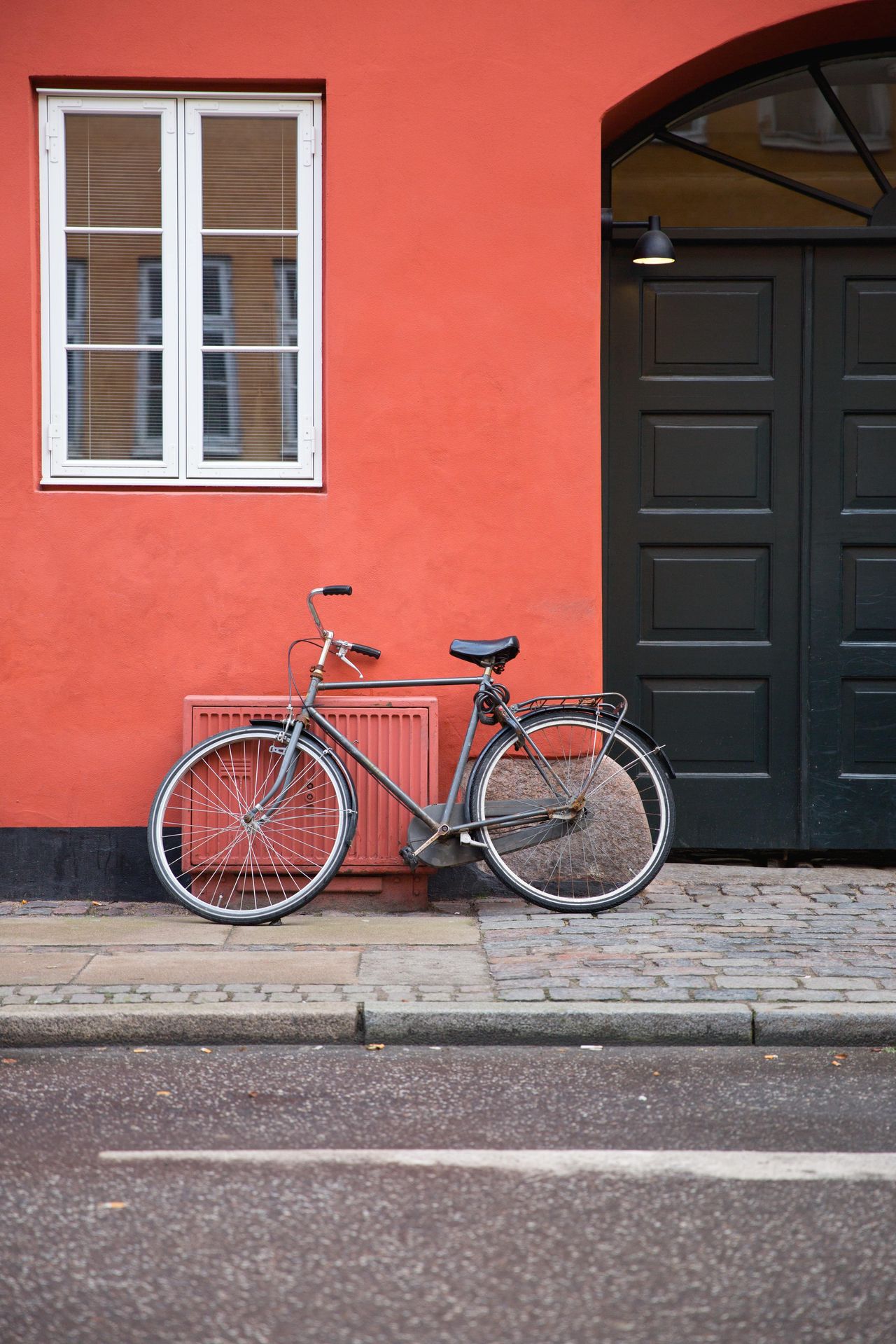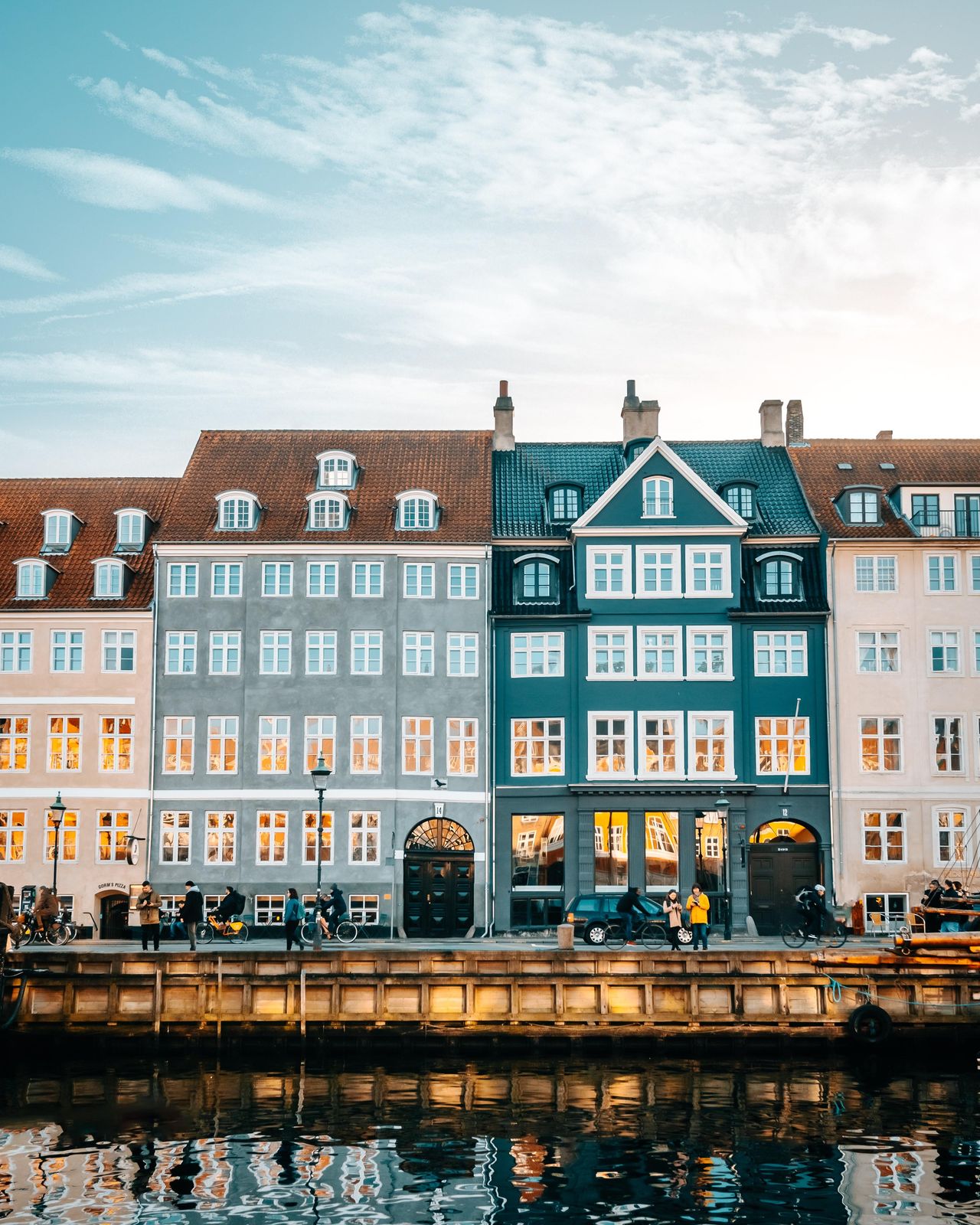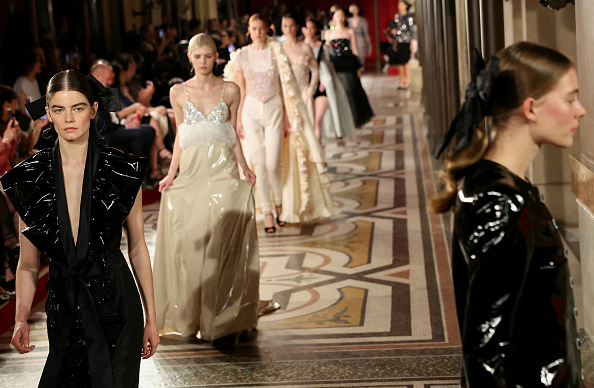Great Escapes: Copenhagen’s Cozy, Egalitarian Chic
There are many cities often described as “laid-back” that don’t totally warrant it. Copenhagen warrants it.
The description, though, does not suggest laziness. Copenhagen, in fact, is an incredibly active and fit capital. Last summer, it hosted a raucous Pride Week followed a few days later by an Iron Man competition. In the city of around 600,000, the average age is 33.
Indeed, Københavners—as its inhabitants are known—are a cheerful and active bunch. A certain coolness is the overall vibe of the city, a feature that some say stems from the Danish Law of Jante, or a sense of modest egalitarianism. Danes resent ostentatiousness. Combine that with hygge, the cherished Danish virtue of coziness, and you have a society that is friendly and welcoming but not too over the top. In other words, a fitting place for a traveler.
Copenhagen occupies two islands on the Øresund strait, across from Sweden (a bridge leads to the much-less-interesting Malmö.). Founded by Viking fishermen in the 10th century, it did not become Denmark’s capital until five centuries later. Under the Danish monarchy, the city was transformed into the preeminent cultural and economic center of Scandinavia, a position it arguably maintains today.
Since World War II, the Danish economy has extended into high-end services, pharmaceuticals and green energy, to impressive results. At some US$68,000, Denmark’s GNI per capita is the seventh highest in the world and Danes enjoy a high quality of life. Their capital is one of the most financially dynamic in northern Europe. Yet the city strikes a fine balance between pursuing its modern, capitalist aspirations and maintaining its old-world charms.

STAY
Hotel D’Angleterre is Copenhagen’s premier historic hotel, a regal, white-walled beauty dating back to 1755. Affectionately called “The White Lady on Kongens Nytorv”—the name for the wide, bustling square it overlooks—the hotel was extensively renovated in 2013. Well-equipped with modern amenities and some ninety rooms, D’Angleterre retains its Old French-inspired aesthetic. Elsewhere along Kongens Nytorv, considered the heart of the city, is the Royal Theatre as well as ample shopping, dining, and a stop on Copenhagen’s incredibly efficient metro. The spa and large indoor pool are both splendid.
For a more modern abode, book a room at Nimb, a fairy-tale-esque five-star boutique hotel in Tivoli Gardens, a pleasant amusement park first opened in 1843. Tivoli owns the hotel, which has a private entry into the magnificent park. The spacious, very hygge rooms are chicly decorated with Danish art. There is a superb rooftop terrace bar and pool, which often has live music. Visit the Asian-inspired spa and its steam room for an urban oasis.
EAT & DRINK
Copenhagen’s wonderfully varied culinary scene, which boasts 15 Michelin-starred restaurants, owes its dynamism to noma. The New Nordic superstar, which opened in 2003, has been rated as the best restaurant in the world (it recently announced it would close for regular service in 2024). Numerous noma-trained chefs have since opened their own eateries—the tastiest burger in the city can be found at POPL, whose founder is a noma veteran; Hart Bakery, one of Copenhagen’s most coveted bakeries, was opened by Richard Hart, formerly of both noma and Tartine.
But the noma buzz also infused pride and dynamism into Copenhagen’s dining scene more generally. One standout is Cofoco, a local favorite. The cozy basement spot serves up Mediterranean-inspired Nordic food like shrimp with foamy lobster bisque, pumpkin and yogurt. It’s a great place for a long, chatty meal over bountiful vin.
Restaurant Møntergade, located on the hip and buzzing Møntergade street, is a homey, chic spot with killer Nordic plates. The smoked eel is fantastic. Top-notch Italian pasta can be found at Undici, a casual, light-hearted place with picturesque positioning at the intersection of two cute canals.
Marchal, the signature restaurant on the ground floor of Hotel D’Angleterre, is well-worth a meal. The Michelin-starred spot transforms Nordic delicacies into scrumptious, inventive plates with a French touch. Try the venison with beets, blackberries, pear and pepper sauce. The Nimb Brasserie, inside the Nimb Hotel, is also French and fantastic.
Lovely libations abound in Copenhagen, a city fond of boozy celebration. One stand-out is RUDO, a vermouth bar opened by former noma sous chef and restaurateur, Christian Puglisi. Fiskebaren, a popular seafood restaurant in the Meatpacking District founded by a former noma sommelier, has an excellent wine selection. For beer, pop into one of trendy microbrewery Mikkeller’s many locations. Bright, inventive cocktails can be found at Ruby, which occupies a townhouse dating to 1740.

EXPERIENCE
One Copenhagen attraction that cannot be missed is the surprisingly charming Tivoli Gardens. To call it an amusement park perhaps cheapens its appeal—the modestl -sized place is less Six Flags than it is Golden Gate Park. Lovely, verdant grounds are interspersed with rollercoasters, a large performance stage and the most beautiful antique merry-go-round you’ve ever seen. Good restaurants abound, too.
With its bright shophouses, pretty canals, grand buildings, and ancient streets, Copenhagen is an architectural wonder. In 2023, Copenhagen becomes a UNESCO World Capital of Architecture, which means a slate of citywide events. Anytime of the year, though, whether during the idyllic summers or the punishing winters, the best way to take in Copenhagen is on a boat tour. Hey Captain, located on the sunny and buzzing Ofelia Square, provides great guided trips, with comfortable, uncrowded boats and bottled craft beer.
Museum-lovers will find much to admire in Copenhagen. One not to be missed is the Glyptoteket, an art museum in central Copenhagen with a fantastic winter garden and lots of sculptures. The National Gallery of Denmark, also known as SMK, is also well-worth a visit too, featuring mountains of glorious Danish and international works from the past seven centuries (Matisse is on display through February.) Stroll through the nearby King’s Garden, a sprawling and serene park, on the way there.
 Copyright 2020, Dow Jones & Company, Inc. All Rights Reserved Worldwide. LEARN MORE
Copyright 2020, Dow Jones & Company, Inc. All Rights Reserved Worldwide. LEARN MORE
This stylish family home combines a classic palette and finishes with a flexible floorplan
Just 55 minutes from Sydney, make this your creative getaway located in the majestic Hawkesbury region.
As Paris makes its final preparations for the Olympic games, its residents are busy with their own—packing their suitcases, confirming their reservations, and getting out of town.
Worried about the hordes of crowds and overall chaos the Olympics could bring, Parisians are fleeing the city in droves and inundating resort cities around the country. Hotels and holiday rentals in some of France’s most popular vacation destinations—from the French Riviera in the south to the beaches of Normandy in the north—say they are expecting massive crowds this year in advance of the Olympics. The games will run from July 26-Aug. 1.
“It’s already a major holiday season for us, and beyond that, we have the Olympics,” says Stéphane Personeni, general manager of the Lily of the Valley hotel in Saint Tropez. “People began booking early this year.”
Personeni’s hotel typically has no issues filling its rooms each summer—by May of each year, the luxury hotel typically finds itself completely booked out for the months of July and August. But this year, the 53-room hotel began filling up for summer reservations in February.
“We told our regular guests that everything—hotels, apartments, villas—are going to be hard to find this summer,” Personeni says. His neighbours around Saint Tropez say they’re similarly booked up.
As of March, the online marketplace Gens de Confiance (“Trusted People”), saw a 50% increase in reservations from Parisians seeking vacation rentals outside the capital during the Olympics.
Already, August is a popular vacation time for the French. With a minimum of five weeks of vacation mandated by law, many decide to take the entire month off, renting out villas in beachside destinations for longer periods.
But beyond the typical August travel, the Olympics are having a real impact, says Bertille Marchal, a spokesperson for Gens de Confiance.
“We’ve seen nearly three times more reservations for the dates of the Olympics than the following two weeks,” Marchal says. “The increase is definitely linked to the Olympic Games.”

Getty Images
According to the site, the most sought-out vacation destinations are Morbihan and Loire-Atlantique, a seaside region in the northwest; le Var, a coastal area within the southeast of France along the Côte d’Azur; and the island of Corsica in the Mediterranean.
Meanwhile, the Olympics haven’t necessarily been a boon to foreign tourism in the country. Many tourists who might have otherwise come to France are avoiding it this year in favour of other European capitals. In Paris, demand for stays at high-end hotels has collapsed, with bookings down 50% in July compared to last year, according to UMIH Prestige, which represents hotels charging at least €800 ($865) a night for rooms.
Earlier this year, high-end restaurants and concierges said the Olympics might even be an opportunity to score a hard-get-seat at the city’s fine dining.
In the Occitanie region in southwest France, the overall number of reservations this summer hasn’t changed much from last year, says Vincent Gare, president of the regional tourism committee there.
“But looking further at the numbers, we do see an increase in the clientele coming from the Paris region,” Gare told Le Figaro, noting that the increase in reservations has fallen directly on the dates of the Olympic games.
Michel Barré, a retiree living in Paris’s Le Marais neighbourhood, is one of those opting for the beach rather than the opening ceremony. In January, he booked a stay in Normandy for two weeks.
“Even though it’s a major European capital, Paris is still a small city—it’s a massive effort to host all of these events,” Barré says. “The Olympics are going to be a mess.”
More than anything, he just wants some calm after an event-filled summer in Paris, which just before the Olympics experienced the drama of a snap election called by Macron.
“It’s been a hectic summer here,” he says.

AFP via Getty Images
Parisians—Barré included—feel that the city, by over-catering to its tourists, is driving out many residents.
Parts of the Seine—usually one of the most popular summertime hangout spots —have been closed off for weeks as the city installs bleachers and Olympics signage. In certain neighbourhoods, residents will need to scan a QR code with police to access their own apartments. And from the Olympics to Sept. 8, Paris is nearly doubling the price of transit tickets from €2.15 to €4 per ride.
The city’s clear willingness to capitalise on its tourists has motivated some residents to do the same. In March, the number of active Airbnb listings in Paris reached an all-time high as hosts rushed to list their apartments. Listings grew 40% from the same time last year, according to the company.
With their regular clients taking off, Parisian restaurants and merchants are complaining that business is down.
“Are there any Parisians left in Paris?” Alaine Fontaine, president of the restaurant industry association, told the radio station Franceinfo on Sunday. “For the last three weeks, there haven’t been any here.”
Still, for all the talk of those leaving, there are plenty who have decided to stick around.
Jay Swanson, an American expat and YouTuber, can’t imagine leaving during the Olympics—he secured his tickets to see ping pong and volleyball last year. He’s also less concerned about the crowds and road closures than others, having just put together a series of videos explaining how to navigate Paris during the games.
“It’s been 100 years since the Games came to Paris; when else will we get a chance to host the world like this?” Swanson says. “So many Parisians are leaving and tourism is down, so not only will it be quiet but the only people left will be here for a party.”
This stylish family home combines a classic palette and finishes with a flexible floorplan
Just 55 minutes from Sydney, make this your creative getaway located in the majestic Hawkesbury region.






















